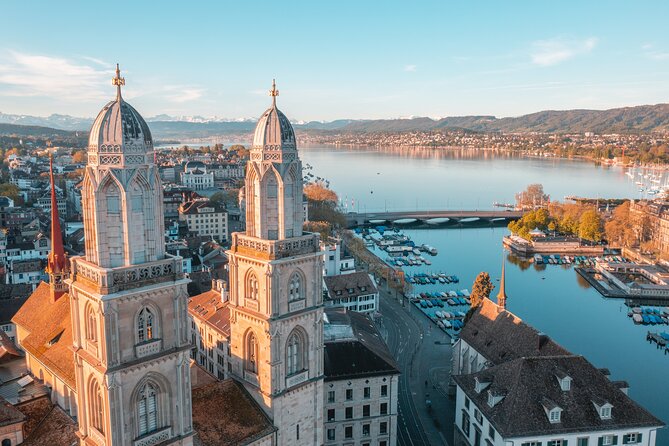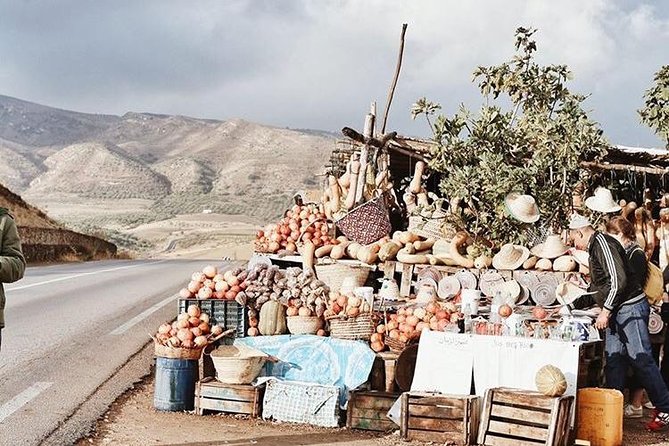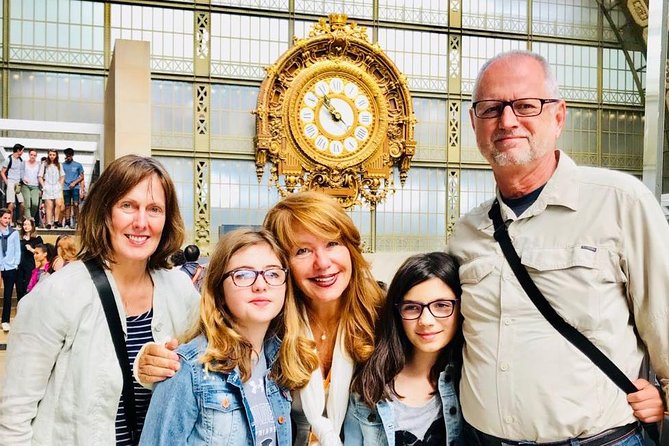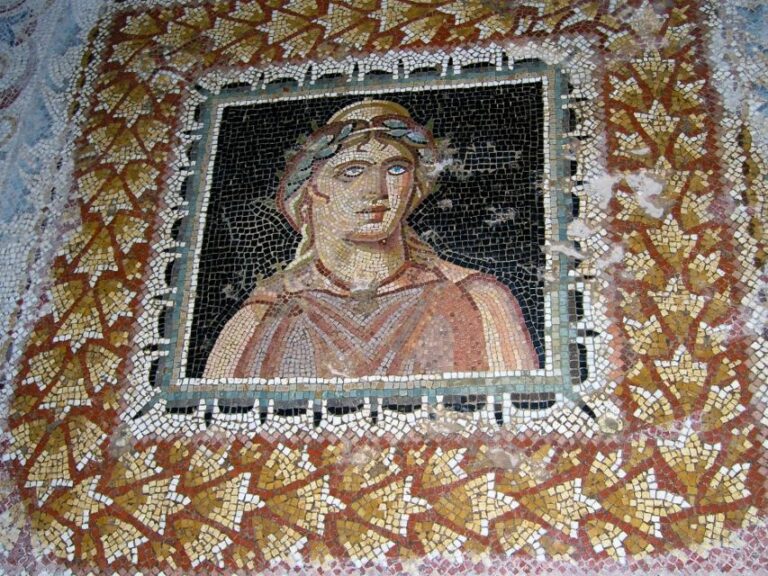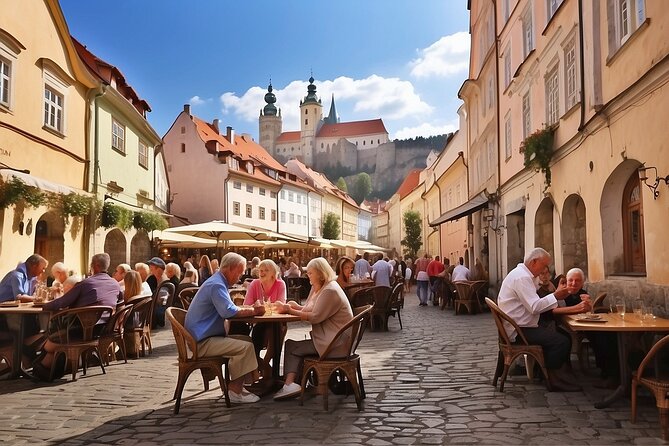Chinatown, Little Italy, and the Lower East Side
As the sun sets over the horizon, casting a warm glow over the vibrant streets, a tapestry of cultures unfolds in the iconic neighborhoods of Chinatown, Little Italy, and the Lower East Side.
Each corner holds tales of resilience, tradition, and adaptation, echoing the footsteps of generations past. But what hidden gems lie within the bustling markets and historic buildings of these enclaves, waiting to be discovered?
The intricate interplay of immigrant histories and cultural influences paint a vivid picture of New York’s rich tapestry, inviting exploration and connection with the heart of the city.
Key Points
- Rich immigrant history in Chinatown, Little Italy, and Lower East Side.
- Sample traditional Chinese, Italian, and Jewish food.
- Explore off-the-beaten-track locations with historical significance.
- Understand the cultural and culinary influences of various immigrant groups.
Here's some more nearby activities we've reviewed
Historical Background of the Neighborhoods
In the bustling streets of Chinatown, Little Italy, and the Lower East Side, the echoes of immigrant history resonate through the diverse architecture and culinary offerings of these vibrant neighborhoods. Urban development has played a pivotal role in shaping these areas, with each block telling a story of ethnic diversity and cultural fusion.
The patchwork of tenements, historic buildings, and contemporary structures reflects the evolution of these communities over time. From the early waves of Irish, Italian, Jewish, and Chinese immigrants to the present-day multicultural hub, these neighborhoods stand as testaments to the city’s rich heritage.
Exploring the historical background unveils a tapestry of influences that have left an indelible mark on New York City’s landscape, making it a melting pot of traditions and histories.
Culinary Exploration of Chinatown
Explore the vibrant culinary landscape of Chinatown, where a fusion of flavors awaits eager explorers.
The food diversity in Chinatown is a testament to the cultural fusion that defines this neighborhood. From traditional dim sum to aromatic noodle soups, visitors can enjoy a stack of tastes and textures.
Chinese bakeries offer sweet treats like egg tarts and pineapple buns, while bustling markets showcase exotic fruits and spices. The influence of various immigrant groups can be seen in the dishes served, blending centuries-old culinary traditions with modern flavors.
Exploring Chinatown’s eateries provides a unique insight into the rich history and cultural tapestry of this iconic New York City neighborhood.
Immigrant Influence on Lower East Side
Amidst the bustling streets of the Lower East Side, one can witness the profound influence of immigrants shaping the cultural fabric of this vibrant neighborhood. The economic contributions of various immigrant groups have been instrumental in revitalizing the area, with businesses ranging from small local shops to bustling markets.
Social integration has played a key role in the neighborhood’s evolution, as different communities have come together to create a diverse and inclusive environment. The Lower East Side stands as a testament to the resilience and creativity of those who’ve chosen to make it their home, with cultural festivals, community events, and a blend of traditions that reflect the rich tapestry of immigrant influences.
Architectural Heritage in Little Italy
The vibrant streets of the Lower East Side seamlessly transition into the architectural delights of Little Italy, where a rich heritage of buildings adorned with classic Italian motifs awaits exploration. Italian craftsmanship is evident in the intricate details of structures, showcasing a blend of traditional and modern influences. Neighborhood preservation efforts have ensured that the essence of Little Italy’s architectural history remains intact, offering visitors a glimpse into the past. The facades of these buildings tell stories of a bygone era, reflecting the cultural pride and artistry of Italian immigrants. From ornate balconies to colorful murals, every corner exudes a sense of belonging and tradition. Explore the table below for a snapshot of architectural highlights in Little Italy:
| Architectural Highlight | Description |
|---|---|
| Ornate Balconies | Intricate ironwork designs adorn many buildings. |
| Colorful Murals | Vibrant paintings depicting Italian scenes. |
| Historic Facades | Preserved facades showcasing Italian architectural styles. |
| Traditional Courtyards | Hidden gems offering peaceful retreats. |
| Iconic Landmarks | Buildings with significant historical importance. |
Evolution of Cultural Landmarks
In the evolving landscape of Manhattan’s cultural tapestry, significant transformations have shaped the once humble landmarks into vibrant reflections of diverse heritage and history.
The cultural transformation of Chinatown, Little Italy, and the Lower East Side has been a testament to the community development that has taken place over the years. These neighborhoods have evolved from being primarily immigrant enclaves to now standing as iconic cultural landmarks in New York City.
The architectural heritage intertwined with the cultural fabric has been preserved through preservation efforts and adaptive reuse projects. As a result, visitors can witness the blending of traditions, tastes, and tales that highlight the rich tapestry of experiences brought by Irish, Italian, Jewish, and Chinese immigrants.
Impact of Immigrant Communities
As Manhattan’s neighborhoods evolved into iconic cultural landmarks, the impact of immigrant communities on Chinatown, Little Italy, and the Lower East Side emerges vividly through their enduring legacies in architecture, cuisine, and societal contributions. Cultural assimilation and community integration are evident in the vibrant streets and diverse flavors that define these areas. Below is a table highlighting the key aspects of the immigrant communities’ influence on these neighborhoods:
| Aspect | Impact |
|---|---|
| Architecture | Blend of traditional styles with modern influences |
| Cuisine | Fusion of authentic dishes with local tastes |
| Societal Contributions | Enriched cultural tapestry through art and music |
| Community Engagement | Strong bonds within neighborhoods fostering unity |
These neighborhoods stand as testaments to the resilience and creativity brought by generations of immigrants, shaping the very essence of New York City.
Here's a few more nearby tours and experiences we have reviewed.
- SUMMIT One Vanderbilt Experience Ticket
- All-Access 9/11: Ground Zero Tour, Memorial and Museum, One World Observatory
- New York Catacombs by Candlelight
- New York City: Central Park Private Horse-and-Carriage Ride (Mar )
- Central Park Pedicab Guided Tours
- Ahoy NY Food Tours Chinatown & Little Italy Food Fest EST 2009
Common questions
Are There Any Specific Ghost Stories or Supernatural Legends Associated With the Neighborhoods of Chinatown, Little Italy, and the Lower East Side?
While some cities are steeped in paranormal encounters and urban legends, others boast supernatural mysteries and haunted tales. The neighborhoods in question are no exception, each shrouded in its own eerie lore.
How Have Contemporary Art and Street Art Cultures Influenced the Visual Landscape of These Neighborhoods?
Contemporary art and street art culture have significantly impacted neighborhood transformations through vibrant visuals and creative expressions. These art forms contribute to the urban development, adding color and character to the streetscapes, reflecting evolving community identities.
What Lesser-Known Cultural Festivals or Events Take Place in Chinatown, Little Italy, and the Lower East Side Throughout the Year?
Throughout the year, the neighborhoods host various cultural celebrations, showcasing local cuisine and community traditions. Festive parades add vibrancy to the area, offering glimpses into the rich tapestry of events that reflect the diverse heritage of the communities.
Are There Any Hidden Underground Tunnels or Secret Passageways With Historical Significance in These Neighborhoods?
Exploring the city’s depths reveals historical tunnels and underground secrets, connecting past eras to modern times. Uncover hidden passageways with intriguing tales, shedding light on forgotten pathways that intertwine with the vibrant tapestry of New York City’s history.
How Have Recent Gentrification Efforts Impacted the Traditional Businesses and Communities in Chinatown, Little Italy, and the Lower East Side?
Recent gentrification efforts have significantly impacted the traditional businesses and communities in the neighborhoods. The changes have brought both positive and negative impacts on the local community, challenging the balance between heritage preservation and urban development.
Here's more of our most recent tour reviews happening neaby
- New York Harbor Craft Beer, Manhattan Skyline Sailing Cruise – New York City
- 1 Hour Private Charter in New York Harbor for up to 6 People
- NYC Central Park Horse and Carriage Ride: Long Ride 45 Min
- Grand Central Photo Tour
- Chelsea Galleries and High Line; Art, Architecture and History
- Tour of New York City at Night
- Brooklyn Bridge and Dumbo Walking Tour
- New York City: Museum of Broadway Entry Ticket
- Photographer, Professional Photo Shoot – New York
- NYC Skyline Helicopter Tour From Kearny, NJ
- Private New York City Airport-to-Airport Transfer (JFK/LGA/EWR)
Last Words
As the sun sets over the bustling streets of Chinatown, Little Italy, and the Lower East Side, the echoes of immigrant history still resonate in the vibrant culture of these neighborhoods.
From the tantalizing flavors of dim sum in Chinatown to the historic architecture of Little Italy, each enclave tells a unique story of resilience and community.
The fusion of traditions and the spirit of adaptation have left an indelible mark on the heart of New York City, inviting visitors to explore and uncover the layers of immigration history that continue to shape these vibrant districts.
